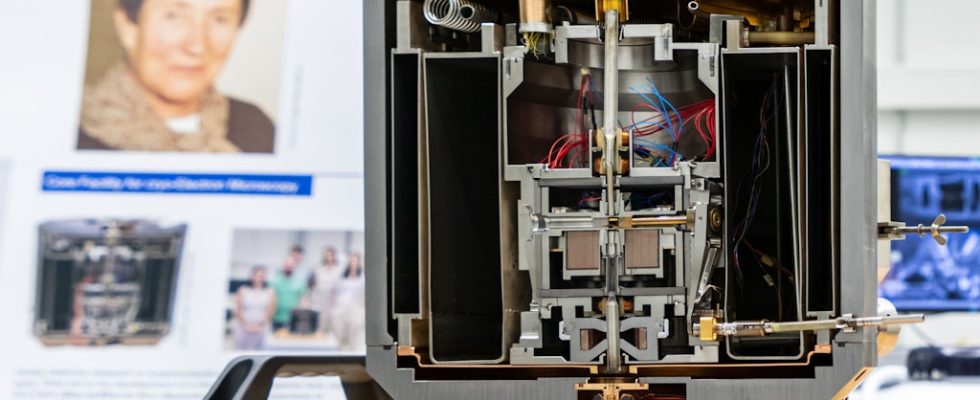A new super microscope and a new research building will be inaugurated this week on the Berlin-Buch campus. They are used for so-called cryo-electron microscopy, which allows you to look deep into the tiniest structures of cells – at the nanometer level. A nanometer is a billionth of a meter. You can see more clearly than ever before what happens, for example, when molecules collide inside a cell.
The new cryo-electron microscope is four meters high and cost around five million euros. It is located in a new research building named after Isolde Dietrich. The physicist, who died in 2017, conducted research in Berlin for a long time and, not least, laid the foundations for electron microscopy in the laboratory of Nobel Prize winner Ernst Ruska.
The Isolde Dietrich House will open on September 15th in Berlin-Buch with a one-day symposium. It houses the so-called Core Facility for Cryo-Electron Microscopy (Cryo-EM). This is operated by the Charité – Universitätsmedizin Berlin in collaboration with the Max Delbrück Center and the Leibniz Research Institute for Molecular Pharmacology (FMP).
Advertisement | Scroll to continue reading
Detailed looks deep into the interior of the cells
With cryo-EM, “structural biology can venture into the interior of the cell,” explains Christoph Diebolder, structural biologist and head of the new core facility. It allows scientists to view biological samples in their natural state “with near atomic resolution and thus investigate the precise structure and function of complex cellular mechanisms such as the ribosome, the cell’s ‘protein producer’.”
In this way, the biochemical processes of the “smallest puzzle pieces of life” become visible, according to a contribution from the Max Delbrück Center. It can also be used to track down the processes behind many diseases.
This is done by examining specimens that are just 300 nanometers thick and shock-frozen to minus 150 degrees Celsius and examined in a cryo-electron microscope. This stands like a huge safe in the new Isolde Dietrich House. The name Isolde Dietrich is almost unknown compared to those of other outstanding Berlin researchers. But it once made a decisive contribution to the worldwide success of electron microscopy.
Looks quite unspectacular: View of part of the four meter high cryo-electron microscope in Berlin-Buch.Wiebke Peitz/Charité
Superconducting lenses made electron microscopes even sharper
The physicist, born in 1919, who died on January 17, 2017 at the age of 97, spent almost her entire career at Siemens AG in Berlin and Munich. She worked with Ernst Ruska, the inventor of the electron scanning microscope, and further developed his ideas in the 1960s – including the superconducting lenses she invented, which were cooled to temperatures close to absolute zero using liquid helium and produced particularly sharp images made possible. In 1993 she founded the Dr. Isolde Dietrich Foundation to promote basic research in the field of solid state physics. This primarily supports young female scientists.

